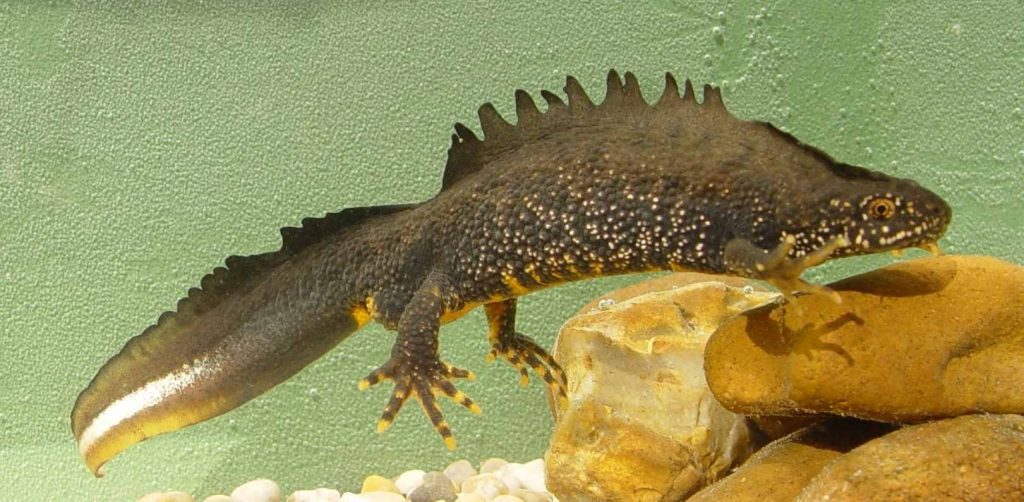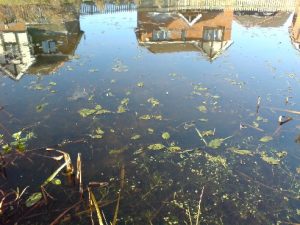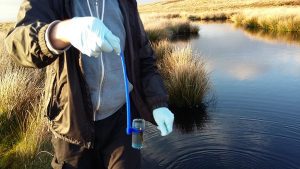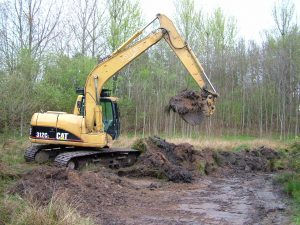Taking a new approach to protecting Great Crested Newts
31st August 2017
Freshwater Habitats Trust is working with partners Environment Bank, Amphibian and Reptile Conservation, NatureMetrics and ABSustain to develop a new approach to Great Crested Newt conservation.

Natural England announced a couple of years ago that they would be changing the way they recommend protecting Great Created Newts. The new approach focusses on ensuring thriving populations spread throughout the landscape rather than trying to protect every single individual newt. We are now preparing for a trial of this new approach in the South Midlands, from Oxfordshire in the west to Bedfordshire in the east.

The Great Created Newt has long been a controversial beast – specially protected but seemingly widespread, its appearance wherever new homes, schools or roads are being built is now legendary. Because of its special protection people are required by the law to go to considerable lengths and expense to protect the animal from the effects of building projects. The problem is that, with a few notable exceptions, careful post-construction monitoring shows that efforts to protect the animal have not been very successful with the newts rarely thriving in their new urbanised environment. The net effect has been to get the newt a terrible reputation, with large sums of money being spent for not much benefit to newts or other freshwater wildlife.

Now in the South Midlands our partnership has begun to take the first steps towards developing a new approach that will meet Natural England’s objectives. The work begins with using survey data from the new eDNA technique to help predict where we think newts are present now. Depending on how likely newts are to be present at any given site, builders will be charged accordingly by the Local Planning Authority, and the money used to fund the creation of high quality new habitats away from the newly urbanised land – which rarely provides a good environment for newts or other freshwater wildlife. In doing this we will add to the network of existing newt habitat, help put back clean water in the landscape and, crucially, create habitats which will be secure for the long term. If our approach to delivering Natural England’s objectives is approved (and we have some very stringent requirements to meet), we expect that this will make much better use of the money being spent to protect newts, with the aim of returning them to parts of the countryside where they have long been lost. Some areas will remain sacrosanct – it won’t be possible to simply bulldoze an area specially designated as protected for newts (though in practice there aren’t very many of these). At sites where we suspect a lot of newts will be found, measures to protect the newts will still be taken.

Some people are worried that creating new habitats in exchange for damaging existing environments – sometimes called habitat offsetting – is intrinsically bad for nature and to be avoided at all costs. In many cases they are right. You can’t pretend to replace ancient woodland with some new tree planting. But water habitats, and newts, are a bit different. The creation of new habitat is a natural part of the life of freshwater environments, and many freshwater plants and animals are adapted to exploit this. The newts seem no exception to this fairly general rule – indeed the biggest UK population of great crested newts is in man-made ponds near Peterborough, and our own Million Ponds Project has successfully created new high quality clean water ponds which have quickly been colonised by Great Created Newts. We think that, if carefully applied, this new approach of creating habitat in the right place, of the highest quality, for great crested newts has great potential.
